20/05: Day 2 Exploring the Orkney Islands
Category: General
Posted by: The Agnew Family
I don't know if you noticed in the photos from yesterday, but there are essentially no trees on Orkney. When I say Orkney I mean Mainland and the islands that are joined to it by the Churchill causeways (more about them later). A few trees have been planted but in general the landscape is treeless. By 3500 BC, Orkney had seen a decline in forest cover. This was due to human activity and a deterioration in the climate. Orkney isn't flat but rather low gentle hills which are mainly grass but there are some moors. Beef cattle, dairy herds and sheep graze in the many green fields across the island.
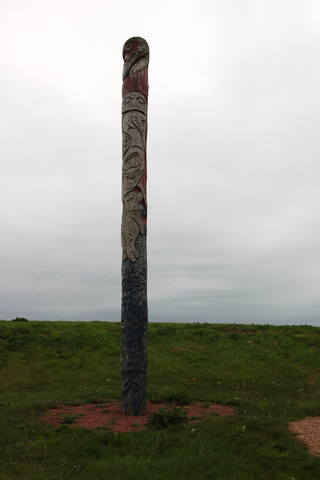
Yes, there really is a totem pole on Orkney. It was a joint project between local carvers and 4 Squamish Nation carvers in 2007.
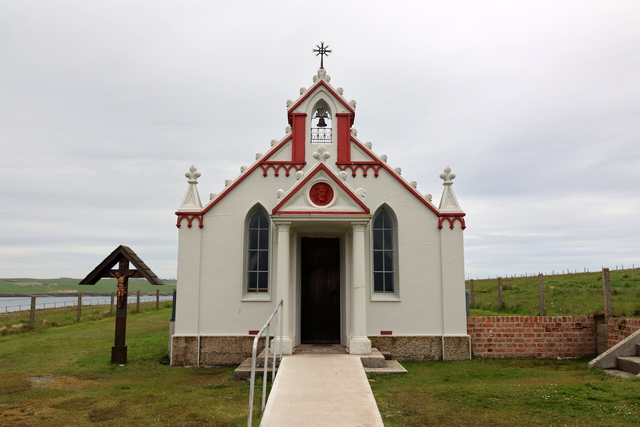
I find the story of the Italian Chapel to be fascinating. During WWI and WWII the British navy were based out of Scapa Flow (an area between several of the Orkney Islands). In October 1939 a German submarine sank the battleship HMS Royal Oak. Churchill decided that barriers needed to be built between several of the islands. Manpower was short but coincidentally at that time thousands of Italian soldiers fighting in North Africa were captured. Over 1,000 soldiers were brought to Orkney and under guise of bettering communications between the Orkney Islands, built the barriers. Following the request from the camp priest it was agreed that 2 Nissen huts would be joined together to provide a chapel. Among the Italians in Camp 60 was an artist, Domenico Chiocchetti, and he was given the task of transforming the two Nissen huts into a chapel. He was assisted by other tradesmen - in particular Giuseppe Palumbi, a blacksmith, and Domenico Buttapasta, a cement worker. This photo and the 3 following photos are the end result.
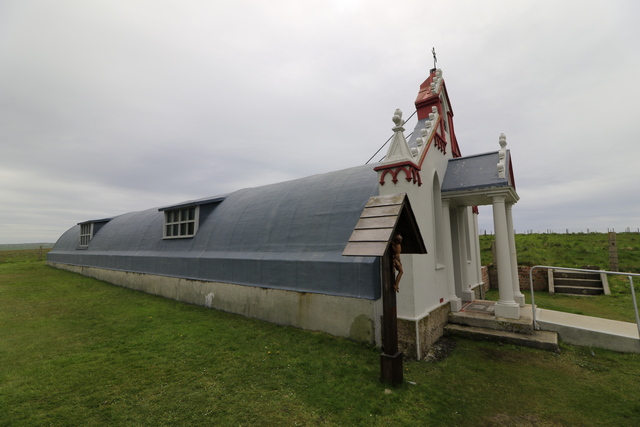
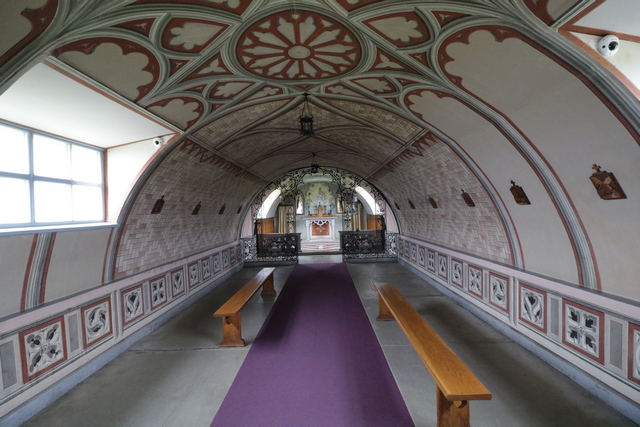
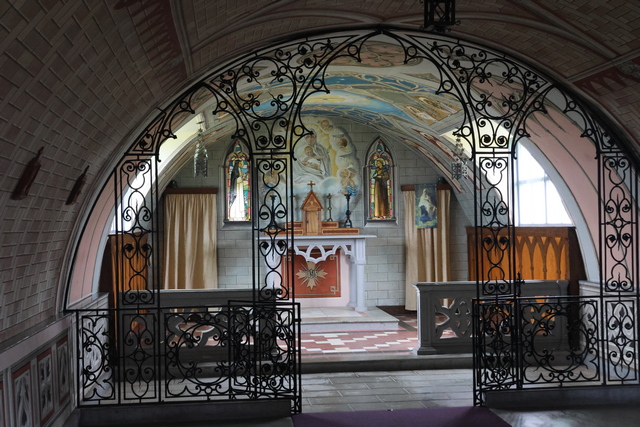
BTW the interior walls of the chapel are painted.
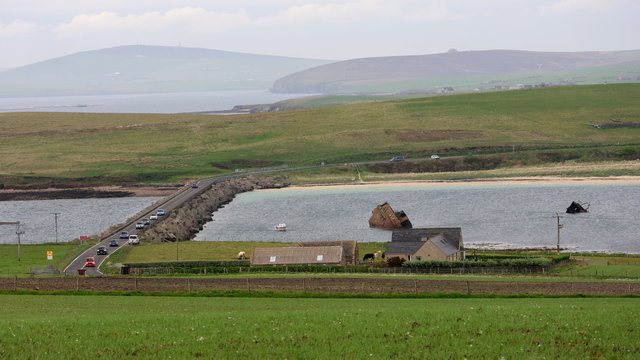
One of the 4 Churchill Barriers, a series of causeways linking South Ronaldsay to Orkney Mainland. Overhead cableways were set up, and 250,000 tons of rock dumped to form a base. The base of rocks was then topped by 66,000 concrete blocks, cut to 5 and 10-ton sizes. The 5-ton blocks were laid directly on the base, and the 10-ton blocks arranged randomly along the sloping sides, to break up wave patterns. Rock was quarried locally and the concrete was cast on Orkney and transported by railways to the site.
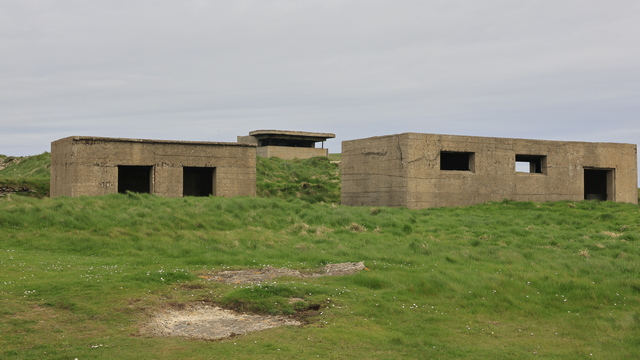
The remains of bunkers, gun mounts, etc. can be found on the islands linked by the Churchill barriers.
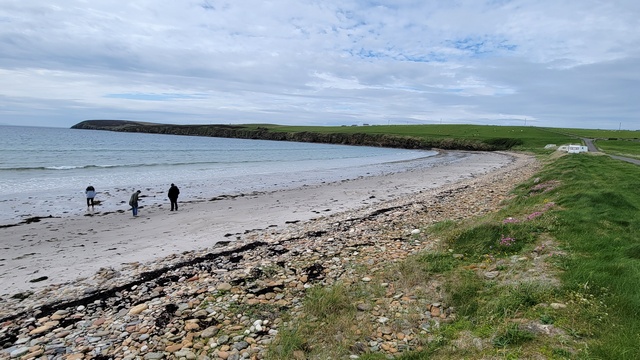
Sands of Wright ---- my maiden name is Wright so are these my sands?
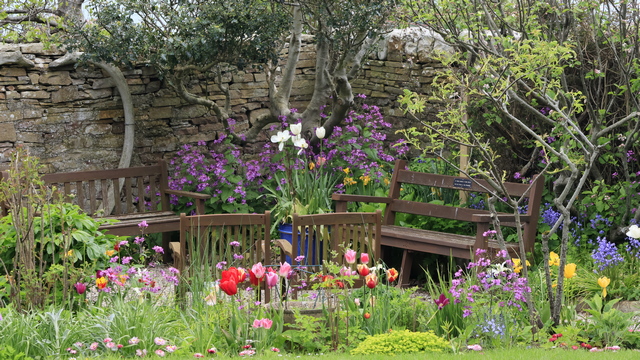
A beautiful community garden in St Margaret's Hope
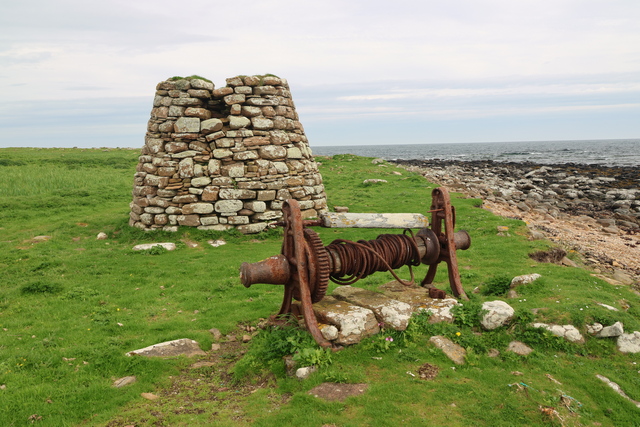
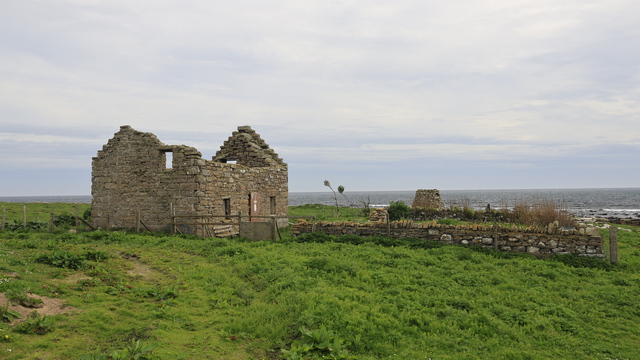
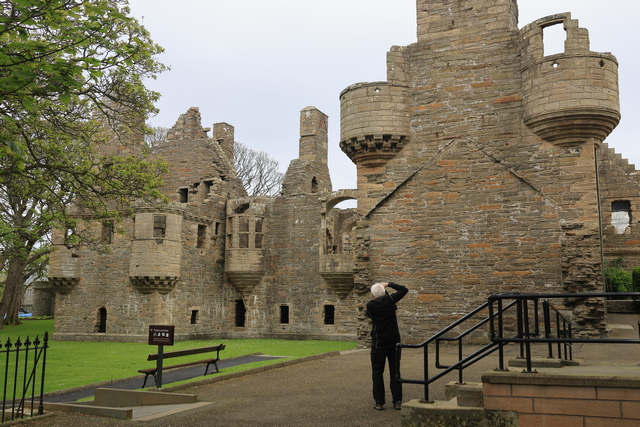
The Bishop's Palace, Kirkwall is a 12th-century palace built at the same time as the adjacent St Magnus Cathedral in the centre of Kirkwall. It housed the cathedral's first bishop, William the Old of the Norwegian Catholic church.
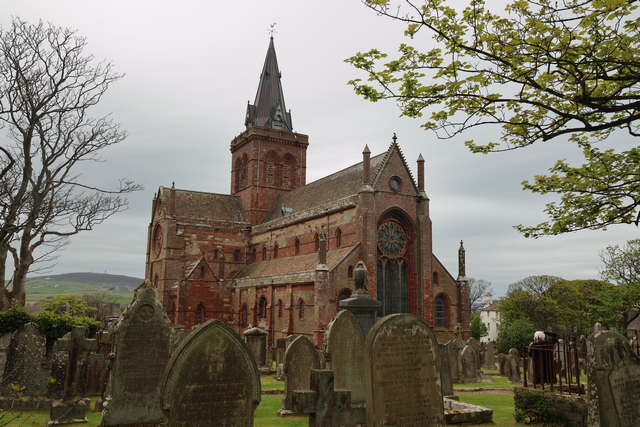
The back of St. Magnus Cathedral. The front of the church was crowded with people from a wedding.
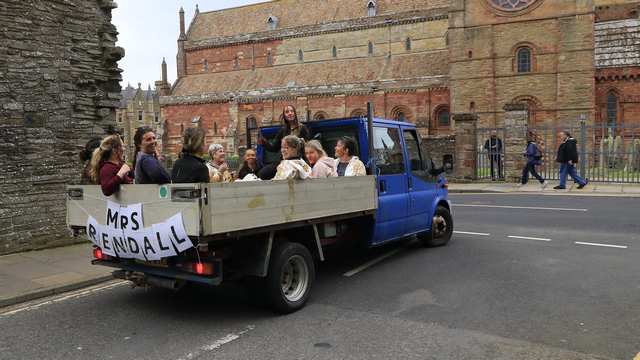
Ed and I are easily identifiable as tourists. These young ladies asked where we were from and we asked what they were doing? They told us the young woman sitting hirer than the rest was getting married in 6 weeks. I guess one of the things to do is get covered in goop, ride around in the back of a pickup truck making lots of noise. We saw a 2nd truck with a group of guys in it doing a similar thing.

Yes, there really is a totem pole on Orkney. It was a joint project between local carvers and 4 Squamish Nation carvers in 2007.

I find the story of the Italian Chapel to be fascinating. During WWI and WWII the British navy were based out of Scapa Flow (an area between several of the Orkney Islands). In October 1939 a German submarine sank the battleship HMS Royal Oak. Churchill decided that barriers needed to be built between several of the islands. Manpower was short but coincidentally at that time thousands of Italian soldiers fighting in North Africa were captured. Over 1,000 soldiers were brought to Orkney and under guise of bettering communications between the Orkney Islands, built the barriers. Following the request from the camp priest it was agreed that 2 Nissen huts would be joined together to provide a chapel. Among the Italians in Camp 60 was an artist, Domenico Chiocchetti, and he was given the task of transforming the two Nissen huts into a chapel. He was assisted by other tradesmen - in particular Giuseppe Palumbi, a blacksmith, and Domenico Buttapasta, a cement worker. This photo and the 3 following photos are the end result.



BTW the interior walls of the chapel are painted.

One of the 4 Churchill Barriers, a series of causeways linking South Ronaldsay to Orkney Mainland. Overhead cableways were set up, and 250,000 tons of rock dumped to form a base. The base of rocks was then topped by 66,000 concrete blocks, cut to 5 and 10-ton sizes. The 5-ton blocks were laid directly on the base, and the 10-ton blocks arranged randomly along the sloping sides, to break up wave patterns. Rock was quarried locally and the concrete was cast on Orkney and transported by railways to the site.

The remains of bunkers, gun mounts, etc. can be found on the islands linked by the Churchill barriers.

Sands of Wright ---- my maiden name is Wright so are these my sands?

A beautiful community garden in St Margaret's Hope



The Bishop's Palace, Kirkwall is a 12th-century palace built at the same time as the adjacent St Magnus Cathedral in the centre of Kirkwall. It housed the cathedral's first bishop, William the Old of the Norwegian Catholic church.

The back of St. Magnus Cathedral. The front of the church was crowded with people from a wedding.

Ed and I are easily identifiable as tourists. These young ladies asked where we were from and we asked what they were doing? They told us the young woman sitting hirer than the rest was getting married in 6 weeks. I guess one of the things to do is get covered in goop, ride around in the back of a pickup truck making lots of noise. We saw a 2nd truck with a group of guys in it doing a similar thing.